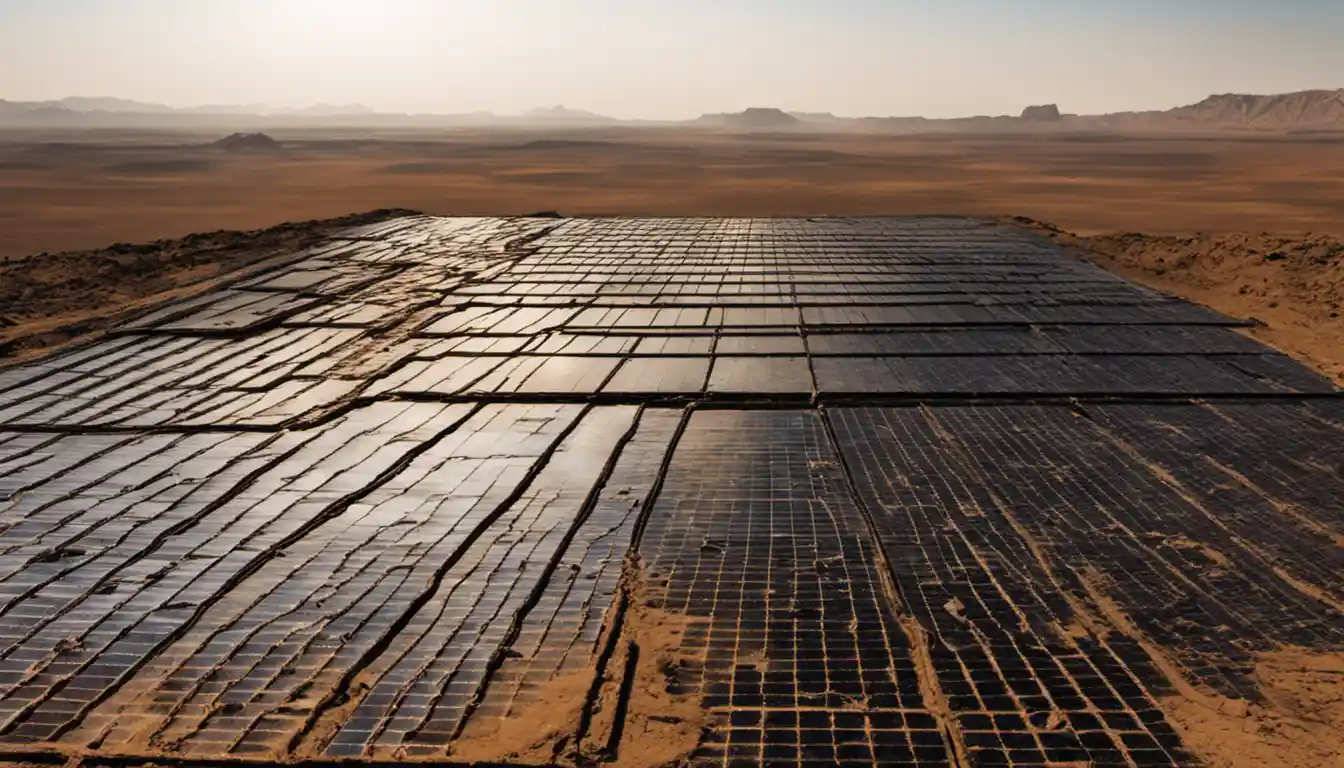Lifespan of Solar Lights: An Overview
Solar lights typically last around 2 years before the batteries need to be replaced. However, the LED lights themselves can last up to 10 years or longer, depending on the quality and maintenance.
The Average Lifespan of Solar Lights
It’s understandable why someone considering the switch to solar might wonder, “how long do solar lights last?” On average, solar lights, specifically the LED lamps, can last anywhere from 10,000 to 50,000 hours. This means, they can serve you for a period exceeding a decade, offering a considerable return on your investment. However, their performance and lifespan can greatly depend on certain variables.
Variables Impacting the Lifespan of Solar Lights
Various factors notably influence the lifespan of solar lights, like the quality of the lamp, exposure to the elements, and maintenance procedures. The geographical location’s weather conditions, amount of daily sunlight, and the care you apply can impact how long do solar lights last. By considering these variables, you can discern how to optimize your solar lighting system to give you maximum returns.
Understanding the Functioning of Solar Lights
Understanding the underlying technology of these brilliant little devices vastly helps prolong their effective life cycle. Solar lights work by absorbing sunlight during the day to power the LED lamp after sunset. They achieve this through solar cells—a series of photovoltaic cells that convert sunlight into electricity—which store the energy in rechargeable batteries for later use.
Can Solar Lights Function in Wet Weather?
A common misconception is that wet conditions might interfere with the functionality of solar lights, but that’s mostly unwarranted. Quality solar lights are built to operate optimally across diverse weather conditions, including wet and snowy conditions.
Do Solar Lights Necessarily Require Sunlight to Operate?
Yes, solar lights do require sunlight for operation. They draw energy from the sun, converting it to electricity stored in their battery. While they might still pick up a small amount of energy on cloudy days, the performance will be significantly lower compared to sunny days.
The Charging Process of Solar Lights
Solar lights charge using sunlight. They have a built-in solar panel that harnesses the sun’s energy during the day, storing it in the battery. Once night falls and the solar cells stop receiving light, the system triggers the LEDs to illuminate.
The Necessity of Leaving Solar Lights On
The question, “do we need to leave our solar lights on constantly?” is something I’ve been asked multiple times. For solar lights to charge effectively, you do not need to leave them on throughout the day. In fact, keeping them off during daylight hours can help increase their overall lifespan.
The Duration of Solar Light Operation

Typically, a fully charged solar light can operate for between 8 to 12 hours. However, this duration decreases during the winter months due to short daylight hours, which reduce the charging time.
Solar Light Usage in Different Seasons
Using Solar Lights in Winter
Solar lights are indeed useful during winter, just as they are in other seasons. However, as mentioned earlier, the hours of daylight in winter are significantly less than in summer, reducing the charging time. The performance can also be affected by snow if it covers and obstructs the solar panels, but clearing it off regularly can maintain efficient operation.
Solar Light Performance on Cloudy Days
A common query is, “how do solar lights perform on cloudy days?” While it is true that solar lights prefer full sun, they can still function on overcast days. Modern solar lights come equipped with technology to charge even in limited sunlight, although the period of illumination during nighttime may be reduced.
Maintenance Tips for Extending Solar Lights’ Lifespan
Regular maintenance is crucial for extending the lifespan of your solar lights. Here are my expert tips from over two decades in the field:
Keeping Solar Lights Clean
Ensuring the solar panels on your lights remain clean and clear, free of dust, dirt, and bird droppings, boosts the amount of sunlight they can absorb, leading to better performance.
Proper Installation of Solar Lights
Make sure your solar lights are installed in a position that guarantees maximum exposure to sunlight. The location should also be safe from potential wear, tear, or accidental damage.
Appropriate Settings for Solar Lights
Using the right settings for your solar lights is central to longevity. Frequently switching between the modes can reduce the lifespan of the components.
The Need for Regular Solar Panel Checks
Regular solar panel checks are necessary to ensure they are in optimal condition. Check for any cracks or damages on the panels after extreme weather conditions.
Preserving Solar Lights by Turning Them Off When Not In Use

You can preserve your solar lights by turning them off during the day or when not in use. Even though they operate on a cycle, manually switching off during the day will help in increasing their lifespan.
How Long Do Solar Light Batteries Last?
Another frequent question is, “how long do solar light batteries last?” Typically, the batteries can last for about 1 to 2 years if regularly used and maintained properly. However, the higher quality batteries can even serve you for up to 4 years.
Lifespan of Solar Light Batteries
Solar light batteries, like any rechargeable batteries, wear out over time. But if you invest in good quality batteries and maintain them well, they can last for a significant period, usually between 1 to 4 years.
Replacement of Batteries in Solar Lights
Replacing batteries in your solar lights is a simple task you can perform to optimize their operation. It is recommended to change them every two years to maintain adequate performance.
The Use of Regular Batteries in Solar Lights
Contrary to some beliefs, you cannot use regular batteries as replacements in solar lights. Solar lights require NiMH (nickel-metal hydride) or NiCAD (nickel-cadmium) rechargeable batteries, as they can withstand the charge and discharge cycles.
Common Issues with Solar Light Functioning
Solar lights are typically very reliable, but like any product, they can encounter some issues. Let’s look at some common problems:
Battery Not Fully Charged/Dead
A prevalent issue in solar lights is the battery not charging fully or becoming dead. Ensuring that the solar panel gets sufficient sunlight exposure and routinely cleaning it can keep the battery charging optimally.
Damaged Light Sensor
A damaged light sensor can affect your solar light’s functionality. If the light turns on during the day or doesn’t act at all, you might need to replace the sensor.
Insufficient Sunshine: Impact on Solar Lights
Insufficient sunlight can definitely affect solar light performance, resulting in dim light or shorter periods of illumination. Positioning your solar lights in direct and ample sunlight can mitigate this issue.
Damage Due to Dirt Accumulation

Accumulated dirt on the solar panel can reduce the absorption of sunlight, leading to less efficient charging. Regular cleaning is crucial to avoid this.
Problems with Wiring
Unlike hardwired lighting systems, most solar lights are wireless. However, some more complex solar lighting systems, notably used in landscape lighting setups, may have wiring that can sometimes get damaged and need repair or replacement.
Reviving and Troubleshooting Solar Lights
Even though solar lights occasionally face issues, most of them are easily solvable. Here are a few simple tricks to revive your solar lights:
Cleaning Methods for Solar Lights
Cleaning your solar lights is a simple process. Use a damp cloth to clean the panels gently, ensuring that all debris and grime are removed. Make sure to dry them thoroughly afterwards to prevent any moisture seeping in.
Charging Solar lights Indoors
If you’re getting limited sunshine outdoors, charging the solar lights indoors near a sunny window can be a viable option.
Dealing with Drained Batteries
If your solar lights are no longer as bright or staying illuminated for as long, it might be time to check the battery. Try replacing the rechargeable batteries. Alternatively, charging them in a high-quality battery charger can often revive them.
Wrapping Up: Making Solar Lights Last Longer
Selecting the Right Solar Lights Based on Needs
It’s essential to choose the right type of solar light for your specific need. If you want to light up your beautiful lawn, you might consider investing in high-quality solar panel lights which are designed to withstand the elements and provide captivating illumination.
Regular Care: The Key to Long-lasting Solar Lights
Regular care is greatly beneficial for the longevity of your solar lights. Cleaning, proper installation, and maintaining an optimal charging cycle by ensuring exposure to sufficient sunlight can extend the lifespan of your solar light system.
There you have it—the answer to “how long do solar lights last”. With adequate knowledge about their function and maintenance, solar lights can play a significant role in reducing energy consumption and providing delightful illumination for years. So, harness the unlimited power of the sun with solar lighting and enjoy the benefits for a long, long time.



